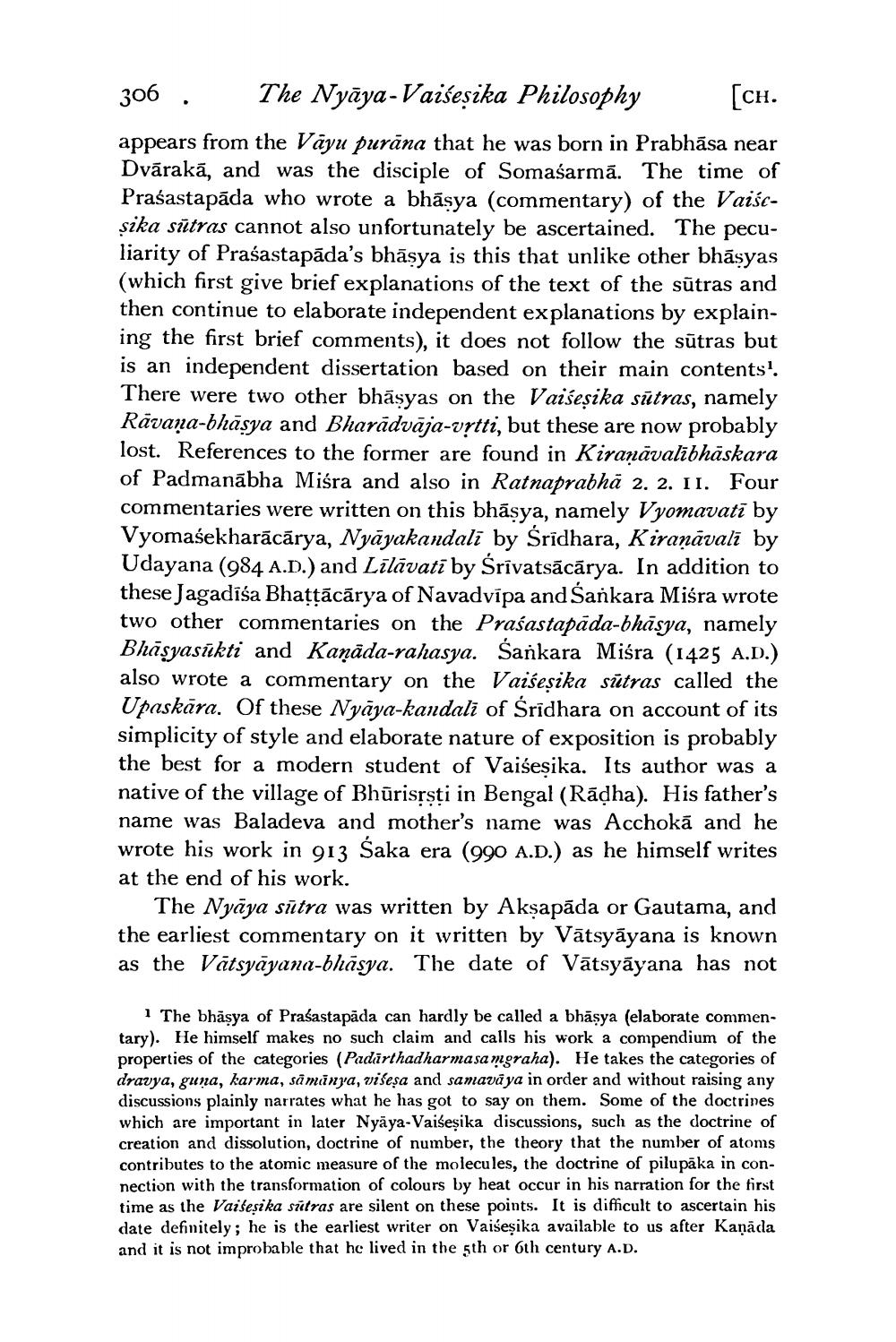________________
306. The Nyāya-Vaiseșika Philosophy [ch. appears from the Väyu purāna that he was born in Prabhāsa near Dvārakā, and was the disciple of Somaśarmā. The time of Prasastapāda who wrote a bhāsya (commentary) of the Vaiścsika sätras cannot also unfortunately be ascertained. The peculiarity of Prasastapāda's bhāsya is this that unlike other bhāsyas (which first give brief explanations of the text of the sūtras and then continue to elaborate independent explanations by explaining the first brief comments), it does not follow the sūtras but is an independent dissertation based on their main contents'. There were two other bhāsyas on the Vaiseșika sūtras, namely Rāvana-bhāsya and Bharādvāja-urtti, but these are now probably lost. References to the former are found in Kiranavalībhaskara of Padmanābha Miśra and also in Ratnaprabhā 2. 2. II. Four commentaries were written on this bhāsya, namely Vyomavatī by Vyomasekharācārya, Nyāyakandali by Śrīdhara, Kiraņāvali by Udayana (984 A.D.) and Līlāvati by Śrīvatsācārya. In addition to these Jagadisa Bhattācārya of Navadvīpa and Sankara Miśra wrote two other commentaries on the Prasastapāda-bhāsya, namely Bhāsyasūkti and Kaņāda-rahasya. Sankara Miśra (1425 A.D.) also wrote a commentary on the Vaisesika sūtras called the Upaskāra. Of these Nyāya-kandali of Sridhara on account of its simplicity of style and elaborate nature of exposition is probably the best for a modern student of Vaisesika. Its author was a native of the village of Bhūrisrsti in Bengal (Rādha). His father's name was Baladeva and mother's name was Acchokā and he wrote his work in 913 Śaka era (990 A.D.) as he himself writes at the end of his work.
The Nyāya sūtra was written by Aksapāda or Gautama, and the earliest commentary on it written by Vātsyāyana is known as the Vātsyāyana-bhāsya. The date of Vātsyāyana has not
1 The bhāsya of Prasastapāda can hardly be called a bhāşya (elaborate commentary). He himself makes no such claim and calls his work a compendium of the properties of the categories (Padirthadharmasa mgraha). He takes the categories of dravya, guna, karma, saminya, višeşa and samavāya in order and without raising any discussions plainly narrates what he has got to say on them. Some of the doctrines which are important in later Nyāya-Vaiseșika discussions, such as the doctrine of creation and dissolution, doctrine of number, the theory that the number of atoms contributes to the atomic measure of the molecules, the doctrine of pilupāka in connection with the transformation of colours by heat occur in his narration for the first time as the Vaiseșika sätras are silent on these points. It is difficult to ascertain his date definitely; he is the earliest writer on Vaiseșika available to us after Kaņāda and it is not improbable that he lived in the 5th or 6th century A.D.




